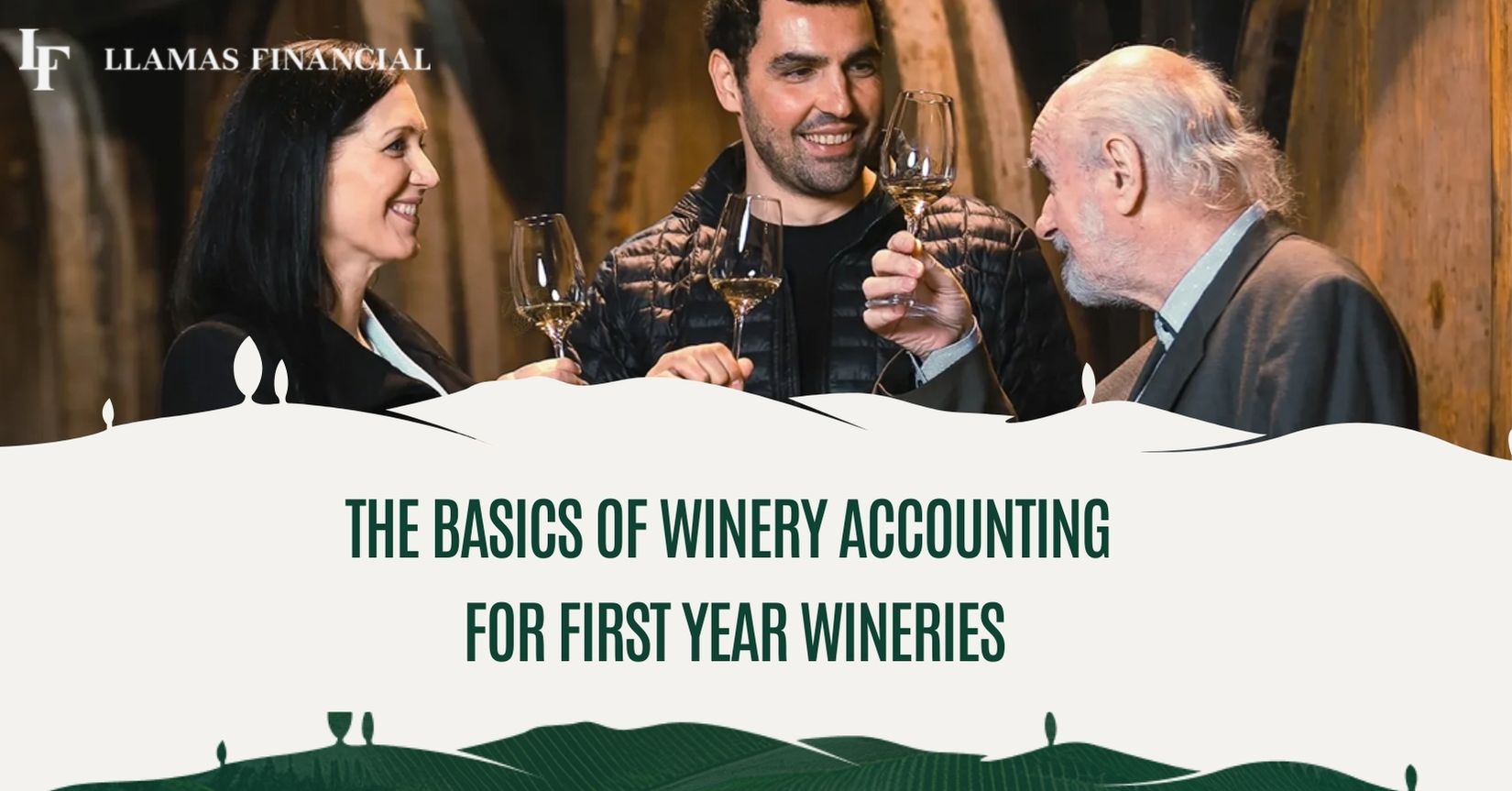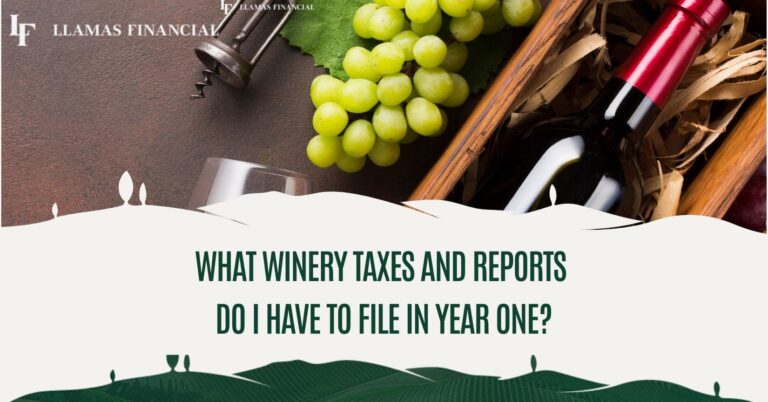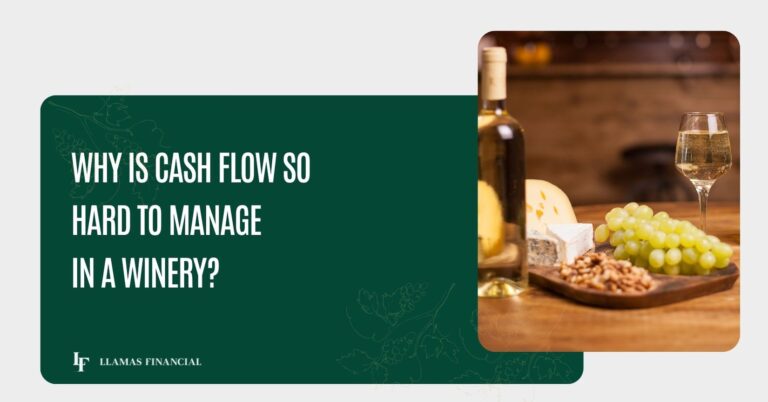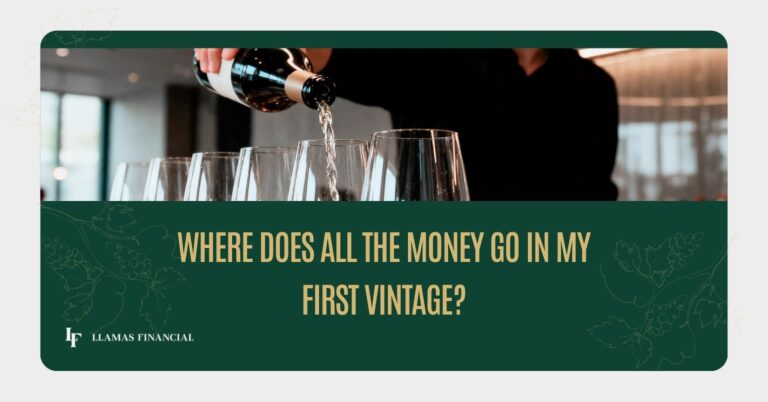If you are in your first year running a winery, you already know how much craft and care goes into every vintage. You’re also learning the hard way that wine is a product with timing quirks that make ordinary small business accounting feel incomplete.
Wine sits in tanks and barrels for months or years, and bottling runs happen in a single expensive month. On top of that, excise and permit rules matter for cash flow. Getting a few core accounting basics right early on will save you headaches and help you make better decisions about pricing, distribution and growth.
In this guide, we’ll go through the basics of winery accounting and what you can start doing right now.
Why Winery Accounting Is Different
A winery is not a simple retail store. The cost you put into making wine is tied up well before you ever take a case to market. That means your bookkeeping needs to do more than tally receipts and run tax returns. You need to link grape costs, fermentation, barrel fees, and bottling to the wine you ultimately sell, so you can see whether a vintage actually made money.
Another practical difference is excise tax. Wineries have federal excise obligations and state rules that affect timing and cash. The TTB has clear guidance on wine excise tax rates and filing requirements, and it is important to know which bottles and volumes trigger which rates. Treat excise timelines as cash events that you must plan for, not just tax entries.
What To Set Up In Year One
Pick The Right Software Stack
Begin by choosing an accounting system that can track inventory and lots. QuickBooks Online and its inventory tools are commonly used by smaller wineries and integrate with many point of sale systems (POS) and tasting room systems, but you will want an add-on or an approach that can handle batch or lot tracking, so vintage costs can be assigned correctly. Getting this in place early avoids time-consuming fixes later.
Build A Winery Specific Chart Of Accounts
This involves separate accounts for bulk wine inventory, finished goods, bottles and packaging, bottling expenses, freight in, tasting room sales, direct to consumer shipping and excise tax payable.
If your books only show a generic inventory and a single cost-of-goods-sold line you will struggle to answer simple questions, like whether the most recent bottling covered its own costs.
Start Lot Tracking And Vintage Cost Sheets Right Away
Record grape purchase costs, crush labor, yeast and supplies, barrel fees, filtration, and packaging. Update those sheets after crush, and again after bottling.
When you can point to a cost per case and a cost per bottle by vintage, you stop guessing when you set wholesale prices or tasting room discounts.
How To Think About Inventory and COGS In Wineries
Inventory moves through the business in stages. You start with raw inputs such as grapes and packaging. You convert inputs into wine in process, then into finished bottled goods. The Cost of Goods Sold (COGS) is what you used during a period.
Here’s what the formula looks like:
COGS = Beginning inventory + purchases and production costs − ending inventory
For a winery, you must include production costs up to bottling to get a realistic COGS figure for the bottles you sell. We recommend recording the cost of goods produced as the way to capture wine in process and to make sure vintage profitability can be calculated reliably.
Payroll, Tasting Room Practices, And Seasonal Staffing
Tasting rooms create waves of seasonal payroll. Plan for those peaks by using a payroll provider that handles federal and state withholding and integrates cleanly into your bookkeeping.
Reconcile tasting room sales daily when possible. Daily reconciliation reduces cash shrinkage, closes the gap between bank balances and book balances, and gives you a reliable short term view of cash available for immediate needs like small purchases or staffing.
If tips or commissions are part of your compensation structure, be sure you have written policies and that payroll correctly accounts for tax implications.
Cash Flow Planning Around Bottling And Excise
Bottling is a large, concentrated cash outlay and it often happens months before revenue arrives. That timing creates a working capital need that many new wineries underestimate.
Map your major cash events such as crush, barrel fees, bottling, label and closure purchases, freight, and excise payments, so you are not surprised by a shortfall. The TTB and state regulators publish filing and payment rules; treat those dates like key cash deadlines when you build monthly forecasts.
Cash vs Accrual Accounting For Wineries
There are two common ways to record income and expenses.
With cash accounting, you record money when it actually moves in or out of your bank account. With accrual accounting, you record income when you earn it and expenses when you incur them, even if cash comes later. As wine production ties costs to a future period when the wine is sold, accrual accounting usually gives you a clearer picture of vintage-level profitability.
The IRS explains these methods and the rules that link inventory to the expected accounting method. If inventory is material to reflecting income, the IRS often expects an accrual approach for purchases and sales.
At the same time, some small businesses may qualify to use the cash method for tax purposes, so many new wineries run accrual style management books, while their CPA prepares the tax returns under the method that makes sense legally and financially. Discussing this with your CPA early will avoid surprises.
Monthly Bookkeeping Routines For Wineries
We’ve worked with the books of many wineries. Here are some routines we recommend that any winery owner adopt:
- Set a monthly rhythm and stick to it. Reconcile bank and credit card accounts each month.
- Compare your inventory records to a physical count at least quarterly.
- Update production cost sheets after crushing and again after bottling runs.
- Run a simple profitability report that separates your numbers by channel, like tasting room, direct to consumer online sales, and wholesale. Seeing gross margin by channel tells you which channels are funding growth and which ones need pricing or cost attention.
Want Practical Accounting Advice For Winemakers?
You got into this business because you love making wine. Yet, getting the accounting right is critical to making better decisions, protecting the value of your vintages, and sleeping easier at night.
So if you want help building a vintage cost sheet, setting up lot tracking in QuickBooks, or planning cash around a bottling run, reach out to Llamas Financial.
We work with wineries all day, every day. Our deep expertise in the wine industry means we offer advice that go beyond the typical reconciliation and reports. We help with pricing, inventory setup, team planning, and all the other aspects of ensuring your winery runs profitability.
Book an introductory call with us and we’ll get right back.
Until next time!





